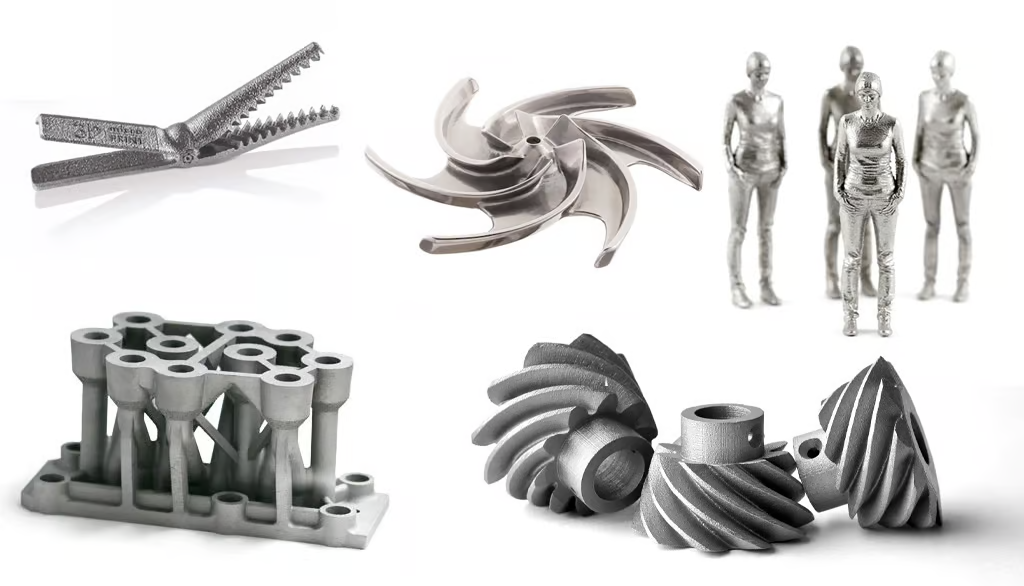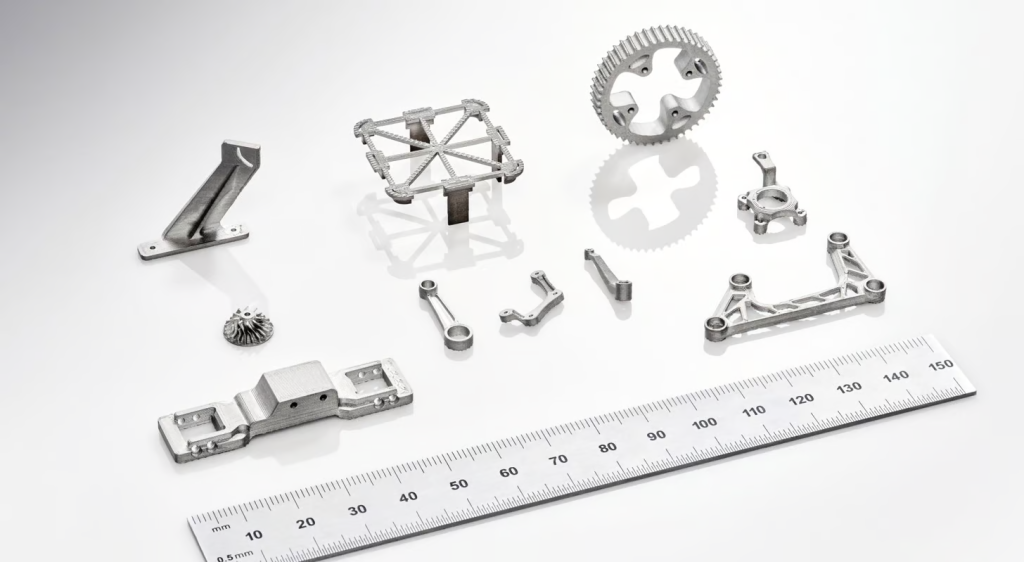Why 3D Print Stainless Steel?
From cutlery and surgical tools to auto parts and turbine blades, stainless steel is all around us, and for a good reason. It’s highly resistant to corrosion and heat, and it’s a lightweight and affordable metal, making it ideal for 3D printing.
Today, 3D printed stainless steel is used for a multitude of industrial parts, as well as for design, architectural, and artistic applications. Why? Because it’s often faster, cheaper, and more efficient than traditional manufacturing methods.
Manufacturers have been stamping, cutting, molding, and welding stainless steel for well over 100 years. 3D printing the metal dates back only decades, but it already rivals traditional methods for speed and cost. Plus, 3D printing enables complex designs not possible with any other manufacturing method, which drives product innovation.

Selective Laser Melting
The most widely used method for metal 3D printing is laser powder bed fusion (LPBF), also called selective laser melting (SLM) or simply metal sintering. LPBF 3D printers use high-powered lasers to selectively melt a metal powder. The melted parts fuse together layer-by-layer on a molecular basis until the homogenous model is complete. The packed powder on the printing bed provides support to the model during the printing process so supports are rarely required.
Depending on your application, when considering an LPBF 3D printer, you’ll look at the level of laser power, the laser beam diameter, the scan speed, the possible layer thickness (from 20 to 120 μm), the scan strategy, the part cooling strategy, and other features that set different brands, and different models within brands, apart. The surface finish of the final melted part is rough and, depending on your requirements, it may need post-processing to achieve a smooth and shiny result.

There are many kinds of stainless steel, and within each type, there are almost infinite variations. The most used types of stainless steel in 3D printing are:
- 316L Stainless Steel: The most popular choice for 3D printing for its corrosion resistance and mechanical properties. It is widely used in various industries, including aerospace, medical, and automotive.
- 17-4 PH Stainless Steel: This precipitation-hardening stainless steel offers excellent strength, hardness, and corrosion resistance, making it suitable for functional parts and industrial applications.
- 420 Stainless Steel: This stainless steel grade is often used for applications requiring high hardness and wear resistance, such as tooling and molds.
- 2205 Duplex Stainless Steel: Duplex stainless steels have a good combination of mechanical properties and corrosion resistance, making them suitable for certain challenging environments.
